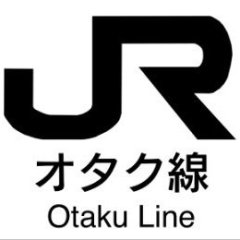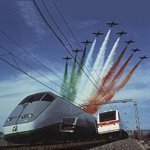Search the Community
Showing results for tags 'kiha'.
-
Hello, I’m getting ready to convert my only other Tomix train to DCC, a single KiHa 40. Opening it up, the LEDs are different from what was inside the 700 Series Shinkansen. My problem is that I don’t know which end is positive. Both the LEDs and the board are marked with a small line, visible in the photo below. I don’t know if that’s supposed to be a “-“, to indicate the negative side, or just simply a visual aid for assembly at the factory. Anyone else have experience with these? I could also use suggestions for wiring and board modification. I’ll be installing a Digitrax DZ126T.
-

Kibi Line (JNR/JR West) in the 1970s and 1980s
miyakoji posted a topic in Japan Rail: Pictures & Videos
OHK (Okayama Broadcasting) has posted some interesting archival footage of the Kibi Line (Okayama-Soja) and around Okayama Station from the 70s and 80s. 1:30 - Bizen Mikado Station. Tickets were available from the shop in front of the station, Nagahara Shoten. 2:20 - Kiha 10 or related type arrives. Students at Kanzei and Okayama Joshi high schools use the station a lot. 2:45 - Bitchu Takamatsu Station. Saijo Inari Gate is immediately northeast of the station, and the Saijo Inari temple complex is a few kilometers up the road. 3:50 - Soja Station. You can see the outline of the former lettering. Once upon a time, Soja was West Soja, and present day East Soja was Soja. 4:30 - Slightly west of Okayama Station, an at-grade crossing causes a lot of backups. Someone in a small white car is in a big hurry. Later in the video we'll see the work to elevate this section of the line. 5:05 - Okayama station, June 1978. A shiny new Kiha 47 arrives at the platform. 5:50 - Higashi (east) Soja. Renewal of the station is complete. I used this station during 2003, this is how I remember it. Based on Google Street View, it's still like this. 6:15 - A Kiha58/28 comes in. I used to go to Okayama City for Japanese class, rolling stock was Kiha 40s 99% of the time, but on a few occasions these were used. I remember riding a bright yellow one with white stripes, and a purple/teal paint job, possibly the Kyuko Notoji and Sakkyu liveries. 6:40 - A statue of Sesshu Toyo is unveiled in the Soja ekimae rotary. 7:10 - Bizen Ichinomiya. If I understand the narration, she is a maybe a contract employee of JNR? She looks like she's in charge. 7:40 - Prelude to the elevetion of the section of track shown at 4:30 8:10 - September 1986, the twilight of JNR. The elevated track is cut in and all is well. 9:00 - December 1988, Bitchu Takamatsu again. A Kiha 40, now with the JR logo, arrives. A new north gate is planned for the station for the convenience of those en route to Saijo Inari. The large gate is shown at 9:25 9:40 - C56 160 is motive power for Kibiji-go excursions for only 3 days during golden week. At the end there's some talk of converting this line to LRT. I've been reading about that before I even lived there, still nothing doing. https://en.wikipedia.org/wiki/Kibi_Line https://en.wikipedia.org/wiki/Sesshū_Tōyō -

JR East announces KiHa 130-500 series and GV-E400 series
Densha posted a topic in Japan Rail: News & General Discussion
Alongside the new Shinkansen test train, JR East has announced the KiHa E130-500 for use on the Hachinohe Line. The first units of these will be delivered in August this year, out of a total 18 cars having been ordered. (Source: http://railf.jp/news/2017/07/04/165500.html) JR East has also announced a prototype of 3 vehicles of the GV-E400 series, a diesel-electric (?) multiple unit train. The mass-production units of this series will be introduced on the Uetsu Main Line, Shin'etsu Main Line, Yonesaka Line and Ban'etsu West Line in the Niigata region in 2019. In 2020 they will be introduced on the Tsugaru Line, Gono Line and Ou Main Line in the Akita region. (Source: http://railf.jp/news/2017/07/04/170000.html) -
Nice video of the South Hokkaido Railway
-
Sakahilin is a Russian island located north of Hokkaido. Originally part of the Russian Empire, after the Russo-Japanese war of 1905, the southern half of the island was handed over to Japan, but after World War 2, the southern part changed hands again, retourning to the Soviet Union. Nowdays it's part of the Russian Federation. But what is interesting for us? Seems familiar right? http://photos.wikimapia.org/p/00/03/67/34/00_big.jpg Well, from the early 1900s to 1945, the Japanese built a 700Km 1067mm gauge railway network in their part of the island. In 1948, the Soviet Railways lacked of cape gauge equipment, so they brougth 30 2nd-hand D51 from the JGR. They were used until 1979, 7 years after Japanese Railways stopped using steam trains, replaced by TG16 double-section diesel-electric locomotives built by Lydunovo works. In 1993, another second-hand Japanese train made it's debut on the Sakahilin railway, this time a DMU, the KiHa 58. http://img-fotki.yandex.ru/get/9066/43672373.18/0_b9210_932cd8e4_XXL.jpg Built between 1961 and 1969by Nippon Sharyo, Fuji Heavy Ind., Tokyu Car Corp. and many others. After the replacement with KiHa 110s in the early 90s, 29 Units were sold by JR East to the financially struggling island railways. Classified "K1 class" They were in use on suburban and commuter services around Yuzno-Sakahilinsk, temporarily replacing the spare-parts awaiting D2 (Fuji Heavy industries, 1985 - even if it resembles a Soviet train down to the bone). With spare parts avaible, the K1 were phased out in favor of the D2, and they all ceased service by 2000. Atleast one (the one pictured) has been preserved in the island railway museum. More infos: English Wikipedia https://en.wikipedia.org/wiki/Sakhalin_Railway Japanese Wikipedia https://ja.wikipedia.org/wiki/%E3%82%B5%E3%83%8F%E3%83%AA%E3%83%B3%E3%81%AE%E9%89%84%E9%81%93 KiHa 58 - Russian Wikipedia https://ru.wikipedia.org/wiki/%D0%9A%D0%B8%D1%85%D0%B058 Now, if you always secretly dreamed of mixing Soviet Ladas and JNR KiHas, here is the prototype for you!
-

JR Shikoku KIRO47 Iyo-nada Monogatari
miyakoji posted a topic in Japan Rail: News & General Discussion
Overshadowed no doubt by the news about JR East's new E235 series, here's JR Shikoku's new cruise train, the Iyo-nada Monogatari. Based on a two-car KIHA47 set, these have been redesignated KIRO, RO indicating Green Car, as far as I know. They're still numbered as 47s, 1400 subseries. Service will start July 26th. The livery is tasteful, I think, and I really like the interior and bentos :). http://railf.jp/news/2014/07/02/170000.html- 15 replies
-
- 4
-

-

JR West KIHA189 to make regular appearance on Biwako Express
miyakoji posted a topic in Japan Rail: News & General Discussion
In JR West's March 15th schedule revision there's an interesting change. KIHA189 series DMUs, built in the last few years to replace the JNR-era 181s used on Hamakaze services, will be assigned to a Biwako Express run on weeknights, departing Osaka at 8:36PM and arriving at its destination, Kusatsu, at 9:27PM. After initially thinking what the !@#$, I assumed this train was coming off a Hamakaze run that conveniently puts it at Osaka to operate this service. The second poster in the Ompuchaneru thread writes just that, it arrives at Osaka as Hamakaze #6. It still seems quite strange for a DMU to be used on a service that's in an entirely electrified section, and a later poster writes that the only others are some JR Shikoku limited express services on the Yosan Line. Also in the thread (http://rail-uploader.khz-net.com/index.php?id=1128280), a poster bemoans JR West's schedule changes. It used to become gradually more convenient, now it gradually becomes more inconvenient . Another replies that it's got to do with Japan's population changes. JR West's pdf: http://www.westjr.co.jp/press/article/items/131220_00_kinki.pdf -
Versatile! That's what I think of KIHAs after seeing what SRT does to them. Have a look. Also, notice the satellite dish. http://rail-uploader.khz-net.com/index.php?id=1124827
-

Keio Hashimoto in 1990, JNR Sagami Line in 1984
miyakoji posted a topic in Japan Rail: Pictures & Videos
Uploader of these is, I assume, the Sagamihara municipal government. This is their 'town info' kind of thing from April 15, 1990. Coverage of the then-new Hashimoto Station starts at 2:33. Waiting rooms were non-smoking from the beginning, seems quite forward-thinking to me. In another episode of this, from November 1984, locations along the then-JNR, then-unelectrified Sagami Line are featured. At the time, the line had KIHA 35s, tablet safeworking, and apparently some manual and spring switches.- 2 replies
-
- 3
-

-
- keio
- 6000 series
-
(and 8 more)
Tagged with:




